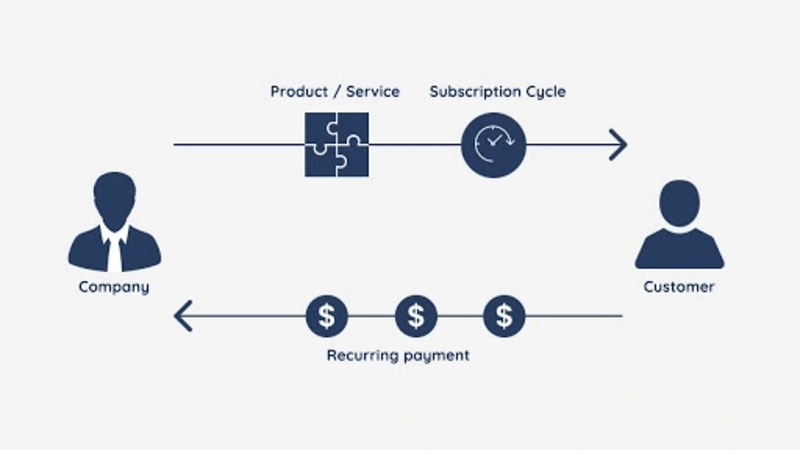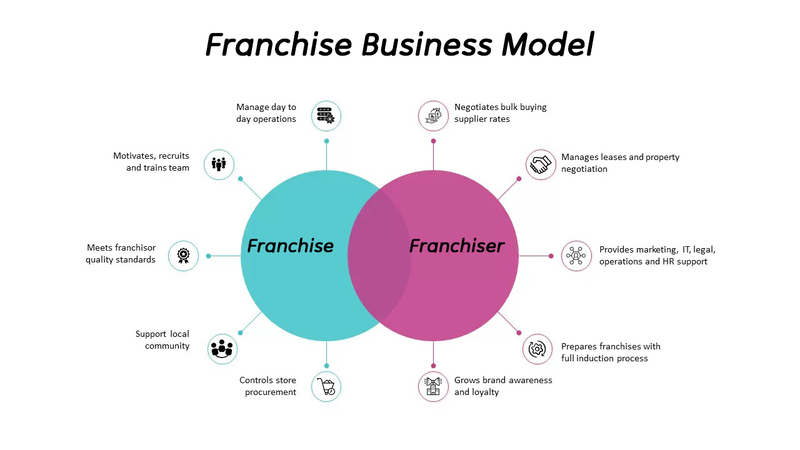Introduction to Business Models
May 20, 2024 By Triston Martin
For entrepreneurs and investors, it is crucial to comprehend the business model. At its heart, a business model explains how the company makes money and maintains its functioning. This paper shall discuss different kinds of business models along with instances from real life that demonstrate their use cases.
The Importance of Business Models
A business model, which is like a framework, helps in showing the way to success. It explains what makes a company valuable, who its customers are, and how it earns money while also detailing the expenses involved. People looking for new ways to do business can study various business models and find chances for innovation or expansion; those who wish to invest can use these models as tools to evaluate if the proposed venture is feasible and likely profitable.
A strong business model is like a compass, it gives direction to strategic choices and helps in balancing resources and risks. Knowing the details of different business models assists companies to adjust with market changes more effectively while staying competitive.
- Consideration: Business models should be flexible enough to accommodate market shifts and technological advancements.
- Caution: Neglecting to regularly review and update the business model can lead to stagnation and loss of market relevance.
Subscription-Based Business Models

One common type of business model is the subscription-based one. In this model, customers pay a regular fee to get continuous access to a product or service. Companies such as Netflix and Spotify have been successful with this kind of model because they offer subscribers unrestricted entry into their extensive content libraries for an agreed-upon monthly payment amount. This type of business method promotes loyalty among customers and gives constant income flow to the company.
Subscription-based models typically necessitate a continuous emphasis on delivering value to maintain subscribers and justify recurring payments. Companies must always innovate their offerings to avoid churn and keep customer contentment intact.
- Consideration: Offering tiered subscription plans with varying features can cater to different customer segments and maximize revenue.
- Caution: Over-reliance on subscription revenue can lead to vulnerability during economic downturns or if competitors offer more enticing alternatives.
E-Commerce Business Models
The main focus of e-commerce business models is to sell products or services on the Internet. For instance, Amazon and eBay are platforms where people who want to buy things and those looking for buyers come together, making money from transaction fees or commissions that they charge. Brands that sell their items directly to consumers (DTC), like Warby Parker and Casper, avoid using usual retail avenues to deal with customers themselves. They make use of their online existence to make operations more efficient while also reaching out globally.
In the e-commerce sector, business models concentrate on customer experience and logistics for timely delivery that brings satisfaction. Using data analytics plus personalization can improve the shopping experience and encourage customers to buy again.
- Consideration: Building trust and credibility through secure payment gateways and transparent return policies is essential for e-commerce success.
- Caution: Overreliance on third-party platforms for distribution can lead to loss of control and exposure to competitor disruptions.
Freemium Business Models
Freemium models provide basic services at no cost and charge for premium features or advanced functions. Users are encouraged to try the product without any obstacles, but they can choose to upgrade to enjoy more benefits. This method is used by companies such as Dropbox and LinkedIn who give out versions of their service that are free but have limited features. This encourages users into an upgrade where they pay for a subscription which provides better services.
Using the freemium model needs careful managing because you want to show enough worth in the free version for people to use it but also give strong reasons to switch. It is very important that the value proposition is communicated effectively and the difference between free and premium features is clear.
- Consideration: Offering time-limited trials of premium features can encourage users to experience the full benefits before committing to a paid subscription.
- Caution: Overselling the free version without delivering tangible value can lead to negative user perceptions and poor conversion rates.
Platform Business Models
Platform business models allow users or participants to interact with each other and are seen in various services such as ride-sharing applications (like Uber) and booking accommodations (like Airbnb). These platforms act as a middleman, bringing together those who offer services and those who use them. They make money by charging fees or taking commissions on every successful interaction on their platform.
Business models of platforms that succeed have a focus on creating a lively environment for users and providers, promoting network effects, and improving the platform's value. It is important to always watch and make better the user experience, as well as handle issues about trust and safety for lasting growth.
- Consideration: Implementing robust dispute resolution mechanisms and user rating systems can enhance trust and mitigate risks associated with platform interactions.
- Caution: Neglecting to address regulatory compliance issues and data privacy concerns can lead to legal challenges and damage the platform's reputation.
Franchise Business Models

Franchise models are methods for entrepreneurs to copy a tested business idea by granting the right to run under an already-known brand. Those who take up franchises gain from brand familiarity, help in operations, and ready-made supply chains. McDonald's and Subway, among others, have constructed flourishing franchise systems that let them grow quickly into new markets while also splitting earnings with their franchise operators.
Business models based on franchises present a path to success with a well-known brand name, offering ease in starting for new entrepreneurs. Usually, the agreement of the franchise includes training plans and continuous help to maintain the same standard and quality at all places.
- Consideration: Franchisors must strike a balance between standardization and flexibility to accommodate local market preferences and regulatory requirements.
- Caution: Franchise agreements should clearly outline rights, responsibilities, and financial obligations to prevent disputes and ensure mutually beneficial partnerships.
Conclusion
To sum up, grasping various business models is very important in dealing with the intricate scene of current commerce. Through looking into different sorts of business models and actual cases, businessmen can find spots to be inventive and expand their ventures while investors can choose wisely where they want to put their money. No matter if it's subscription-based, e-commerce, freemium, or platform and franchise models, every type has its benefits as well as difficulties that mold the workings of this system.
-
 Know-how Jan 25, 2024
Know-how Jan 25, 2024A Guide To Earning Money On eBay
There is a need for a centralized location where individuals can meet to do business via the internet, and this is precisely what e-commerce platforms aim to provide. The only way to make money on such an e-commerce site is to sell something.
-
 Know-how Jan 12, 2024
Know-how Jan 12, 2024A Financial Advisor: What Do They Do?
The decision to pursue a career as a financial adviser may be gratifying since these professionals assist individuals in putting money away for the future and making intelligent investment decisions. To become one, you will first need to look for a company that will hire you, then you will need to become licensed, and finally, you will need to start accumulating a clientele.
-
 Banking Feb 01, 2024
Banking Feb 01, 2024Activate a Credit Card
Activating a new or replacement credit card is necessary before you may activate using it. When you activate your card, you let the company that issued it know you have received it. The activation process takes no more than a few minutes and is almost the same regardless of your credit card.
-
 Mortgages May 19, 2024
Mortgages May 19, 2024Essential Tools for Stock Evaluation
Comprehend how the Price-to-price-earnings ratio and PEG Ratio assist in assessing stock performance and growth possibilities.
